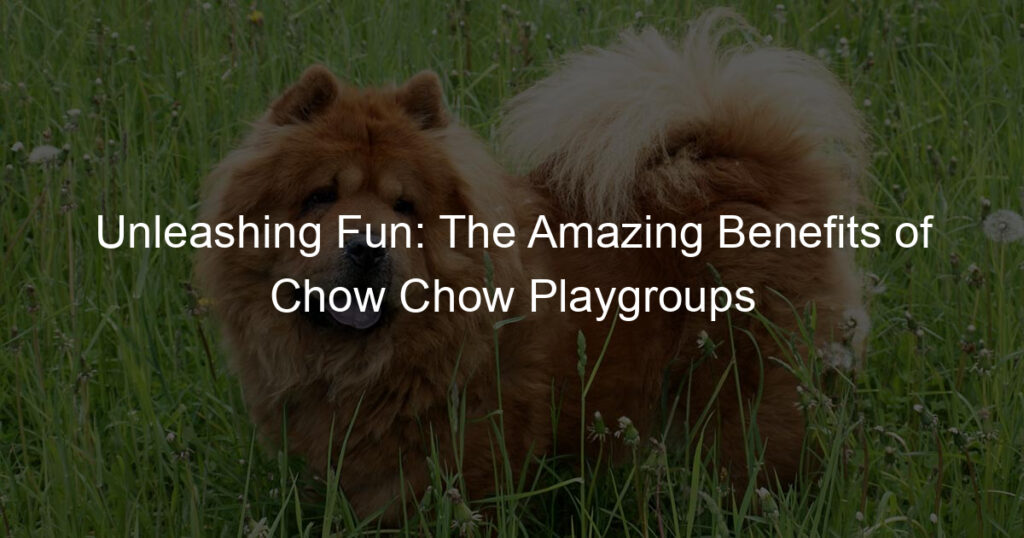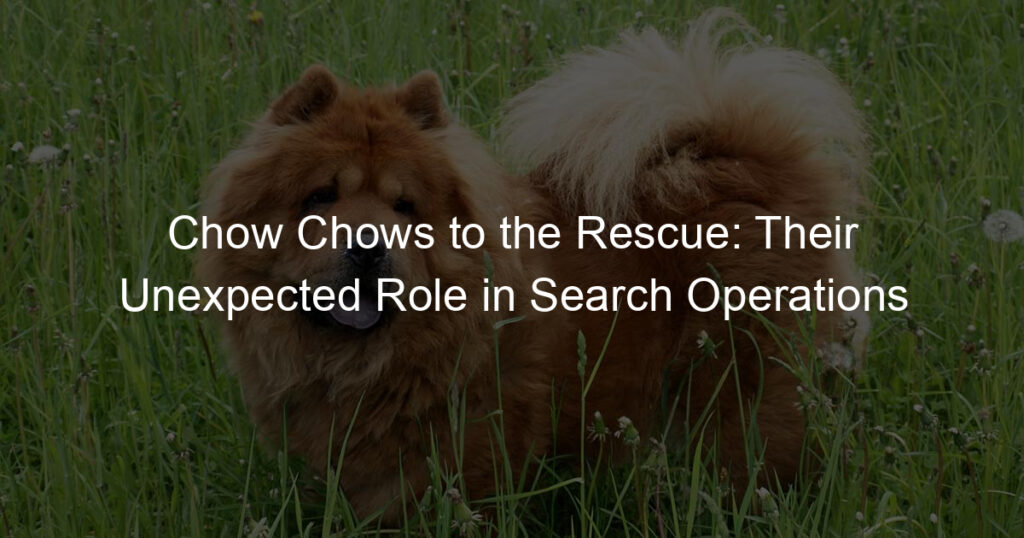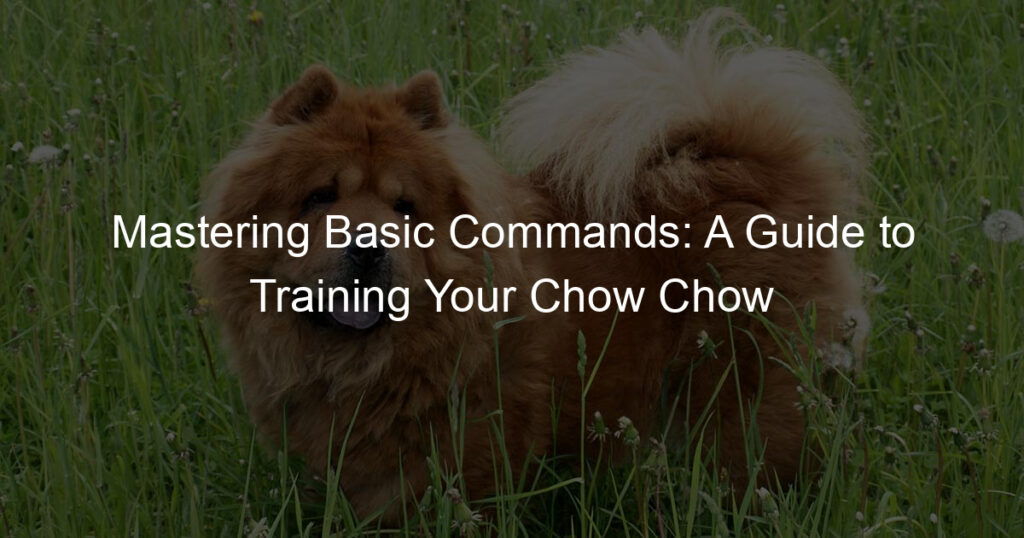Introduction to the Majestic Chow Chow Breed
Welcome to the world of the majestic Chow Chow breed, a dog breed that exudes a royal and regal aura. This breed is known for its unique characteristics that set it apart from other breeds. Let’s delve into understanding why Chow Chows are considered majestic and their royal bearing.
- Understanding the royal bearing of Chow Chows
- Why Chow Chows are considered majestic
The Chow Chow breed is often associated with royalty due to its dignified and aloof demeanor. These dogs carry themselves with an air of nobility, which is evident in their upright posture and proud gait. Their thick double coat, which can be either smooth or rough, adds to their regal appearance. The Chow Chow’s unique blue-black tongue, deep-set eyes, and lion-like mane further contribute to their royal bearing. This breed’s history is also steeped in nobility, as they were once the favored pets of Chinese nobles and emperors. Read more about Chow Chow’s royal bearing on Wikipedia.
Chow Chows are considered majestic for several reasons. Their physical attributes, including their sturdy build, broad skull, and square profile, give them a commanding presence. Their aloof and reserved nature adds to their majestic aura, as they are not easily swayed by emotions. Chow Chows are also known for their independence and intelligence, traits that are often associated with majesty. They are not overly active or playful, but rather, they prefer to observe their surroundings with a calm and composed demeanor. This breed’s majestic nature is further highlighted by their history as guard dogs for Chinese temples and palaces, showcasing their strength and courage. Learn more about why Chow Chows are considered majestic on Wikipedia.
History of the Chow Chow Breed
The Chow Chow, a breed known for its lion-like appearance and unique blue-black tongue, has a rich history that dates back thousands of years. Let’s dive into the origins and historical significance of this majestic breed.
- Origins of the Chow Chow breed
- Historical significance of Chow Chows
The Chow Chow breed is believed to have originated in Mongolia and Northern China, dating back as far as 3000 years ago. They are one of the oldest dog breeds and were bred for various purposes, including hunting, herding, and protection. The breed’s name, ‘Chow Chow’, is thought to have been derived from a term used in the 18th century by merchants to describe miscellaneous items from the Far East, including these dogs. Wikipedia provides a detailed account of their ancient origins.
Chow Chows hold a significant place in history. They were highly valued by Chinese nobles and were often used as temple guards due to their intimidating appearance. The breed was also popular among hunters for their excellent tracking skills. In the late 19th century, Queen Victoria of England received a Chow Chow as a gift, which led to the breed’s popularity in the West. The breed was officially recognized by the American Kennel Club in 1903. Today, Chow Chows are cherished as loyal companions and family pets.
In conclusion, the Chow Chow breed has a deep-rooted history that reflects their versatility and unique characteristics. From their ancient origins to their significance in history, Chow Chows have always been a breed of distinction and admiration.
Characteristics of the Chow Chow Breed
The Chow Chow breed is known for its unique and distinctive features that set it apart from other dog breeds. Let’s delve into the physical characteristics of this majestic breed.
Physical Characteristics
The Chow Chow breed is easily recognizable due to its distinct physical features. Here are some of the most notable ones:
- Distinct features of the Chow Chow dog breed: The Chow Chow is a medium to large-sized dog breed, typically weighing between 45 to 70 pounds. They are known for their lion-like mane, deep-set eyes, and blue-black tongue. Their bodies are compact but muscular, with a broad skull and straight legs. Their double coat can either be smooth or rough, with the rough being the more common of the two. The tail is set high and carried closely to the back. Learn more about their physical features here.
- Color variations in Chow Chows: Chow Chows come in a variety of colors including red, black, blue, cinnamon, and cream. The color of the Chow Chow’s coat is often one of the first things people notice about them. The most common color is red, ranging from a light golden to a deep mahogany. The coat color does not affect the Chow Chow’s temperament or health. Read more about Chow Chow’s color variations here.
Understanding the physical characteristics of the Chow Chow breed can help potential owners better prepare for their care and maintenance. These unique features not only contribute to their striking appearance but also to their health and behavior.
Behavioral Characteristics
Chow Chows are known for their unique and distinct behavioral characteristics. Understanding these traits can help you build a better relationship with your pet.
-
Understanding the Temperament of Chow Chows
Chow Chows are often described as aloof and reserved. They are not overly affectionate dogs, but they form strong bonds with their families. They are known for their loyalty and protective nature. However, they can be stubborn at times, which can make training a challenge. Early socialization is crucial for this breed to prevent them from becoming overly suspicious or fearful of strangers. Wikipedia provides a detailed explanation of their temperament.
-
Chow Chow’s Interaction with Humans and Other Pets
Chow Chows are generally good with children and can get along well with other pets if they are raised together. However, they can be aloof with strangers and may not get along with other dogs, especially of the same sex. It’s important to remember that every Chow Chow is an individual and their behavior can be influenced by a variety of factors, including their upbringing, training, and socialization. Therefore, it’s crucial to introduce new people and pets slowly and in a controlled environment.
In conclusion, understanding the behavioral characteristics of Chow Chows can help you provide them with a suitable environment and handle them appropriately. Remember, patience and consistency are key when dealing with this unique and majestic breed.
Caring for Your Chow Chow
One of the most important aspects of caring for your Chow Chow is understanding their diet and nutritional needs. Chow Chows are a unique breed with specific dietary requirements that need to be met for them to thrive.
Diet and Nutrition
Let’s delve into the recommended diet for Chow Chows and the nutritional needs of this breed.
- Recommended diet for Chow Chows
- Nutritional needs of the Chow Chow breed
Chow Chows typically require a balanced diet that includes a mix of proteins, carbohydrates, and fats. Proteins should be the main component of their diet, making up about 40% of their total food intake. This can include lean meats like chicken, turkey, and fish. Carbohydrates, such as sweet potatoes and brown rice, should make up about 30% of their diet. The remaining 30% should be fats, which can be found in fish oil and flaxseed. It’s also important to include fruits and vegetables for added vitamins and minerals.
Chow Chows require a diet rich in protein to support their muscle development and overall health. They also need a good amount of dietary fiber to aid digestion. Essential fatty acids are important for maintaining their thick, lush coat. They also require certain vitamins and minerals, including Vitamin A, Vitamin E, and Calcium. Always consult with your vet to ensure your Chow Chow is getting the right nutrients in the right amounts.
In conclusion, a balanced diet that caters to the specific nutritional needs of the Chow Chow breed is essential for their health and well-being. Remember, every dog is unique, so it’s important to monitor your Chow Chow’s health and adjust their diet as necessary under the guidance of a vet.
Caring for Your Chow Chow
Exercise and Training
Exercise and training are essential aspects of caring for your Chow Chow. This breed is known for its independent nature, which can make training a challenge, but with the right approach, you can ensure your Chow Chow is healthy and well-behaved.
- Exercise requirements for Chow Chows
- Training tips for the Chow Chow breed
Chow Chows are not as high-energy as some other breeds, but they still require regular exercise to maintain their health. A daily walk of at least 30 minutes is recommended. This breed is also prone to heat sensitivity, so it’s best to exercise your Chow Chow during the cooler parts of the day.
Chow Chows also enjoy playtime and can benefit from games that stimulate their minds, such as puzzle toys. However, due to their heavy coats, they should not be overexerted, especially in hot weather. Always provide plenty of fresh water during and after exercise.
Training a Chow Chow requires patience and consistency. Start training when your Chow Chow is a puppy to establish good habits early. Use positive reinforcement methods, such as treats and praise, to reward good behavior. Avoid harsh training methods, as Chow Chows may respond poorly to them.
Socialization is also an important part of training. Expose your Chow Chow to a variety of people, places, and situations to help them become well-adjusted adults. Enrolling in a puppy training class can be a great way to start this process.
Remember, every Chow Chow is unique and may require different training techniques. If you’re having trouble training your Chow Chow, consider seeking help from a professional dog trainer.
In conclusion, while Chow Chows may require a bit more patience and understanding when it comes to exercise and training, the rewards of having a well-trained and healthy Chow Chow are well worth the effort.
Common Health Issues in Chow Chows
Chow Chows, like any other breed, are prone to certain health issues. It’s essential for Chow Chow owners and enthusiasts to understand these health concerns, as well as the preventive measures and treatments available. This knowledge can help ensure the well-being and longevity of these majestic canines.
- Understanding common health concerns in Chow Chows
- Entropion: This is a condition where the eyelid rolls inward, causing irritation and potential damage to the eye. It’s often noticeable in puppies and can be corrected with surgery.
- Hip Dysplasia: This is a hereditary condition where the hip joint doesn’t fit into the hip socket properly, leading to pain and lameness. Regular exercise and maintaining a healthy weight can help manage this condition.
- Elbow Dysplasia: Similar to hip dysplasia, this condition affects the elbow joint and can lead to pain and lameness.
- Stomach Cancer: Chow Chows are more prone to stomach cancer than many other breeds. Regular vet check-ups can help detect this condition early.
- Preventive measures and treatments
- Regular Vet Check-ups: Regular vet visits can help detect health issues early and provide timely treatment. It’s recommended to have at least one vet visit per year.
- Healthy Diet: A balanced diet can help maintain your Chow Chow’s overall health and prevent obesity, which can exacerbate health issues like hip and elbow dysplasia.
- Exercise: Regular exercise can help keep your Chow Chow’s joints healthy and manage conditions like hip and elbow dysplasia.
- Surgery: In some cases, surgery may be necessary to correct conditions like entropion. Your vet can provide the best advice on this.
Chow Chows are generally healthy, but they can be susceptible to specific health problems. Some of the most common health issues include:
Prevention is always better than cure, especially when it comes to your Chow Chow’s health. Here are some preventive measures and treatments for the common health issues:
Remember, every Chow Chow is unique and may not necessarily develop these health issues. However, being aware of these common health concerns and their preventive measures can help you take the best possible care of your Chow Chow.
Adopting a Chow Chow: Things to Consider
When you decide to welcome a Chow Chow into your life, there are several important factors to consider. This breed requires a significant commitment and may not be suitable for everyone. Here are some key points to think about:
- Understanding the commitment of adopting a Chow Chow
- Choosing the right Chow Chow for your lifestyle
Adopting a Chow Chow is a long-term commitment, often lasting 10-15 years. These dogs require regular exercise, a balanced diet, and plenty of social interaction. They also need regular grooming due to their thick double coat. It’s essential to understand that owning a Chow Chow will require both time and financial investment. Regular vet check-ups, vaccinations, and potential health issues can add up over time. Make sure you are ready for this commitment before deciding to adopt.
Chow Chows are known for their independent and sometimes aloof nature. They can be a great fit for individuals or families who prefer a less clingy breed. However, they can also be stubborn and require a patient and consistent training approach. Consider your lifestyle and daily routine. If you have a busy schedule and cannot dedicate enough time to your pet, a Chow Chow might not be the best choice for you. On the other hand, if you are looking for a loyal and somewhat independent companion, a Chow Chow could be a perfect match.
In conclusion, adopting a Chow Chow is a serious decision that should not be taken lightly. It’s crucial to understand the breed’s characteristics, needs, and potential health issues. By doing your research and considering your lifestyle, you can make an informed decision and provide a loving home for your new furry friend.
Conclusion: The Majesty of Chow Chows
-
Recap of the Chow Chow breed details:
The Chow Chow breed, a majestic and ancient breed, has a rich history that dates back over 2000 years. Originating from China, these dogs are known for their unique blue-black tongues and lion-like mane. They are medium to large-sized dogs, with a sturdy build and a square profile. Their dense double coat, which can be either smooth or rough, comes in five different colors: red, black, blue, cinnamon, and cream.
Chow Chows are known for their aloof and independent nature. They are not overly affectionate but are extremely loyal to their family. They require moderate exercise and a balanced diet to maintain their health. Regular grooming is essential due to their thick coat. They are prone to certain health issues like hip dysplasia, entropion, and skin problems, so regular vet check-ups are necessary.
Adopting a Chow Chow requires careful consideration. They need a responsible owner who can provide them with proper training and socialization from a young age. Despite their challenges, with the right care and love, Chow Chows can make a wonderful addition to the right home.
-
Final thoughts on the majesty of Chow Chows:
Chow Chows, with their noble bearing and unique features, truly embody majesty. Their rich history and distinctive characteristics set them apart from other breeds. Their loyalty and dignified demeanor make them not just pets, but companions and family members.
While they may require more care and attention than some other breeds, the reward of their companionship is worth the effort. Their majestic presence, combined with their unique personality, makes them a breed that is loved and admired by many. As Chow Chow enthusiasts, we can truly say that the majesty of Chow Chows is unmatched.














